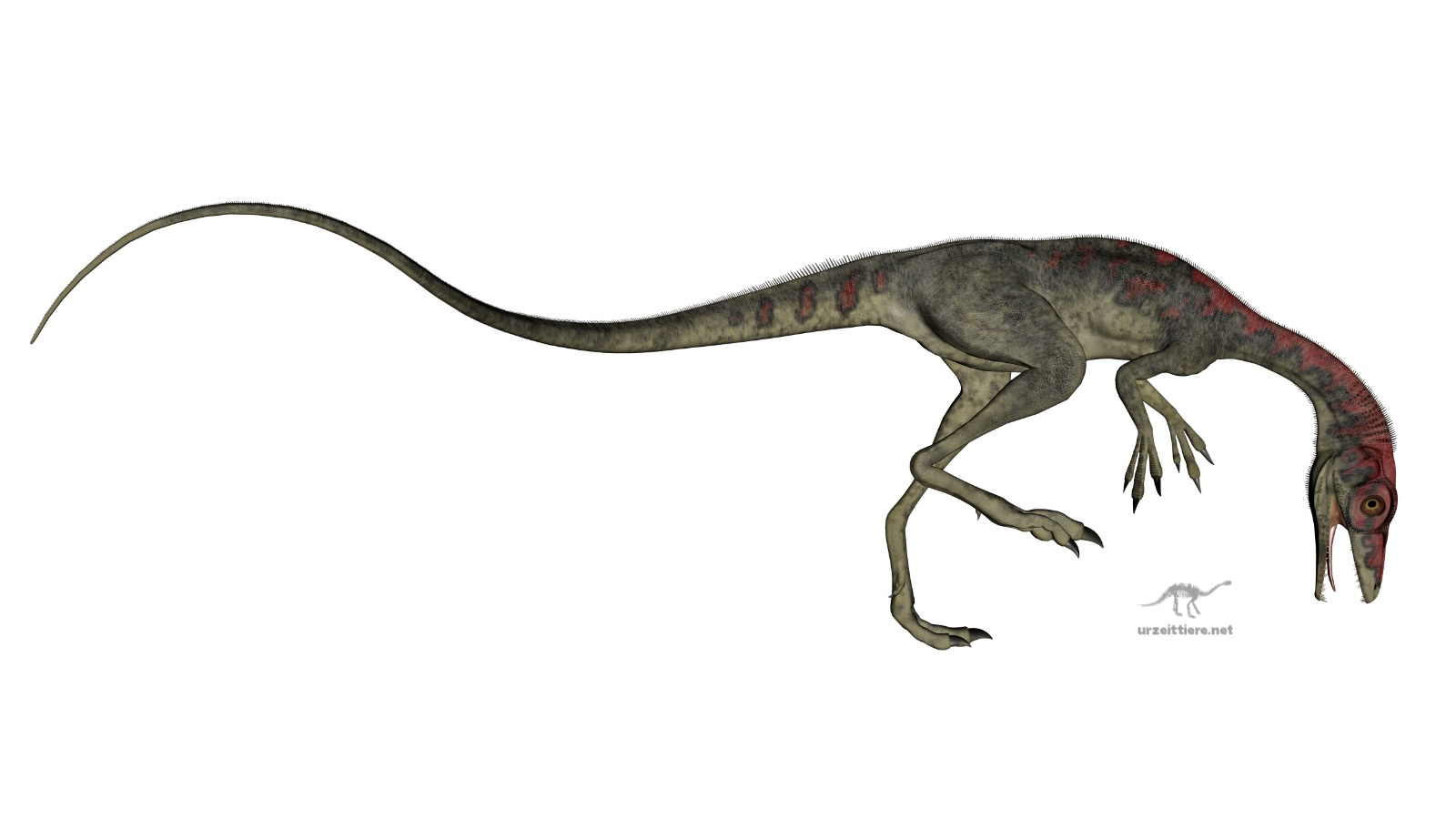
Compsognathus looks like a typical representative of theropods.
It walked on two legs, had relatively short arms with three strong fingers each and a relatively long but thin skull.
Its teeth were long and sharp and well adapted to its prey. This consisted of insects, small vertebrates and lizards.
In addition, it had an extremely long tail. Although some tail vertebrae are missing from the excavated specimens, it is believed that Compsognathus possessed up to 60 tail vertebrae. This means that it possessed the proportionally longest tail of any theropod.
The most outstanding feature of Compsognathus, however, was its size. He was small, very small in fact. Compsognathus was just about the size of a goose. For several decades he was considered the smallest dinosaur in the world.
Two almost complete skeletons of him were recovered in Germany and as well in France. The German fossil belonged to a specimen only 80 cm long. The French is somewhat larger and comes to a length of 129 cm.
| Profile | Compsognathus |
|---|---|
| Prehistoric Era | Upper Jurassic 152.1 to 147.7 million years ago |
| Order | Saurischia |
| Suborder | Theropoda |
| Family | Coelurosauria |
| Tribe | Compsognathidae |
| Genus | Compsognathus |
| Species | Compsognathus longipes |
| Height | 0.4 meter |
| Length | 1.25 meter |
| Weight | 0.26 to 3.5 kilogram |
| Territory | Germany, France |
The food of Compsognathus is known with certainty. In the fossil findings remains of small lizards could be detected in the bellies of both skeletons.
At first the small skeletons were interpreted as embryos. Later, the remains found were thought to be those of a lizard. In 1994, the researcher Ostrom attributed the lizard to the genus Bavarisaurus.
But this assumption is also disproved today. The last meal of Compsognathus was a lizard called Bharatagama rebbanensis.[source]
Like many of the Triassic and Jurassic light theropods, Compsognathus was a fast and agile dinosaur. This agility was very useful to him in hunting his prey and, because of his size, essential for survival when escaping from larger predators.His unusually long tail was very helpful in keeping his balance during high-speed chases.
In 2007, the maximum speed of Compsognathus was estimated to be about 64 kilometers per hour. Researchers William Sellers and Phillip Manning calculated this speed using a computer model of Compsognathus' muscles and skeleton.
For comparison: Usain Bolt reached a top speed of 44.72 km/h.
He had hands with three fingers that he could deftly use to snatch his prey. However, he did not yet possess an opposable thumb.
The eyes were unusually large, as indicated by the large eye sockets. The arrangement of the eye sockets indicate a binocular vision of Compsognathus. This enabled him to get a spatial depth impression of his surroundings and helped him to recognize and fixate his prey.
Image source: Compsognathus longipes ©urzeittiere.net
Skeleton: Zach Tirrell from Plymouth, USA, CC BY-SA 2.0 https://creativecommons.org/licenses/by-sa/2.0, via Wikimedia Commons
Size: No machine-readable author provided. Dinoguy2 assumed (based on copyright claims)., CC BY 3.0 https://creativecommons.org/licenses/by/3.0, via Wikimedia Commons
Fossil: Photograph by User:Ballista. Image edited in Adobe PhotoShop CS2 by User:Firsfron, CC BY-SA 3.0 http://creativecommons.org/licenses/by-sa/3.0/, via Wikimedia Commons